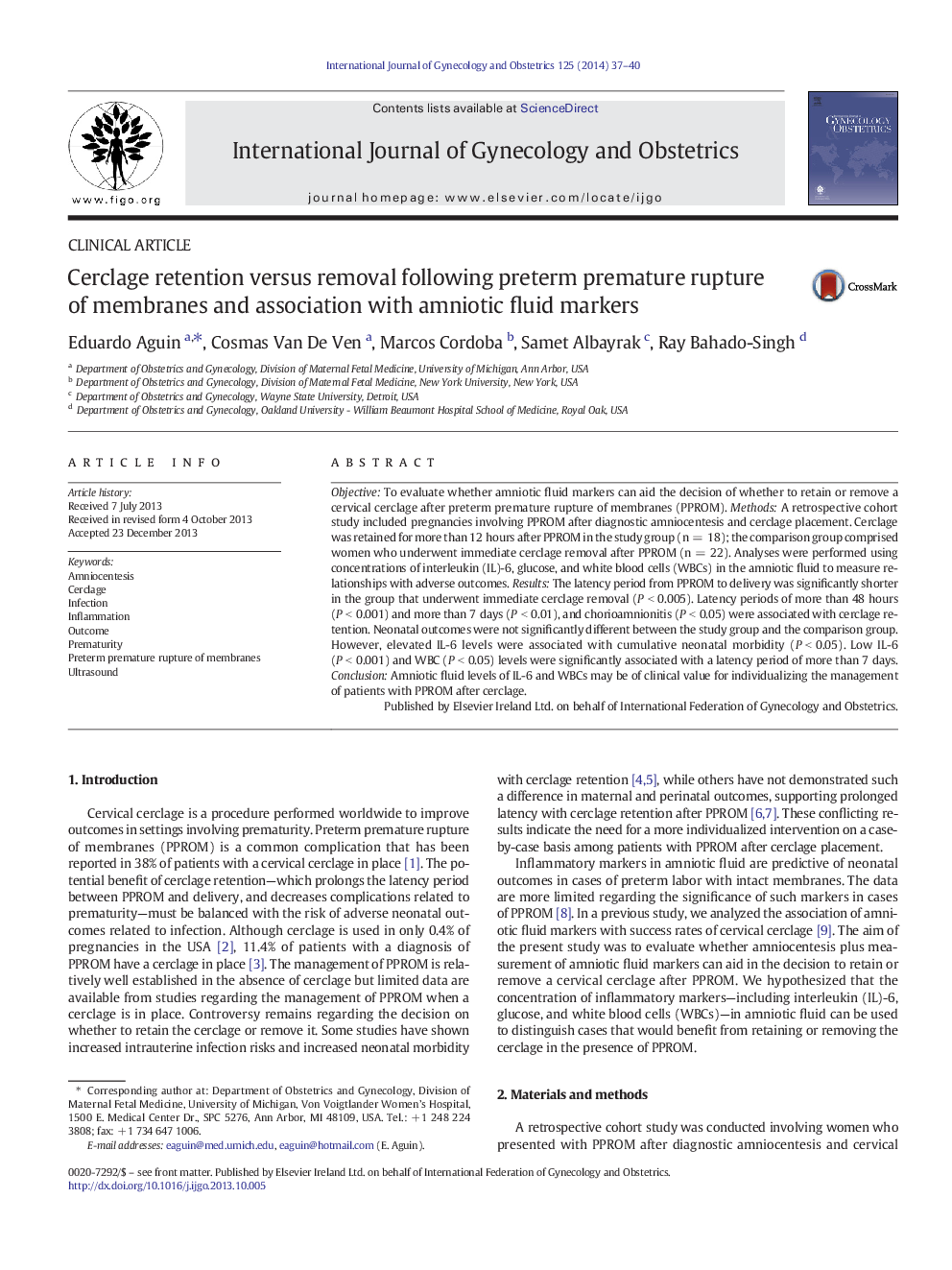| Article ID | Journal | Published Year | Pages | File Type |
|---|---|---|---|---|
| 3948649 | International Journal of Gynecology & Obstetrics | 2014 | 4 Pages |
ObjectiveTo evaluate whether amniotic fluid markers can aid the decision of whether to retain or remove a cervical cerclage after preterm premature rupture of membranes (PPROM).MethodsA retrospective cohort study included pregnancies involving PPROM after diagnostic amniocentesis and cerclage placement. Cerclage was retained for more than 12 hours after PPROM in the study group (n = 18); the comparison group comprised women who underwent immediate cerclage removal after PPROM (n = 22). Analyses were performed using concentrations of interleukin (IL)-6, glucose, and white blood cells (WBCs) in the amniotic fluid to measure relationships with adverse outcomes.ResultsThe latency period from PPROM to delivery was significantly shorter in the group that underwent immediate cerclage removal (P < 0.005). Latency periods of more than 48 hours (P < 0.001) and more than 7 days (P < 0.01), and chorioamnionitis (P < 0.05) were associated with cerclage retention. Neonatal outcomes were not significantly different between the study group and the comparison group. However, elevated IL-6 levels were associated with cumulative neonatal morbidity (P < 0.05). Low IL-6 (P < 0.001) and WBC (P < 0.05) levels were significantly associated with a latency period of more than 7 days.ConclusionAmniotic fluid levels of IL-6 and WBCs may be of clinical value for individualizing the management of patients with PPROM after cerclage.
